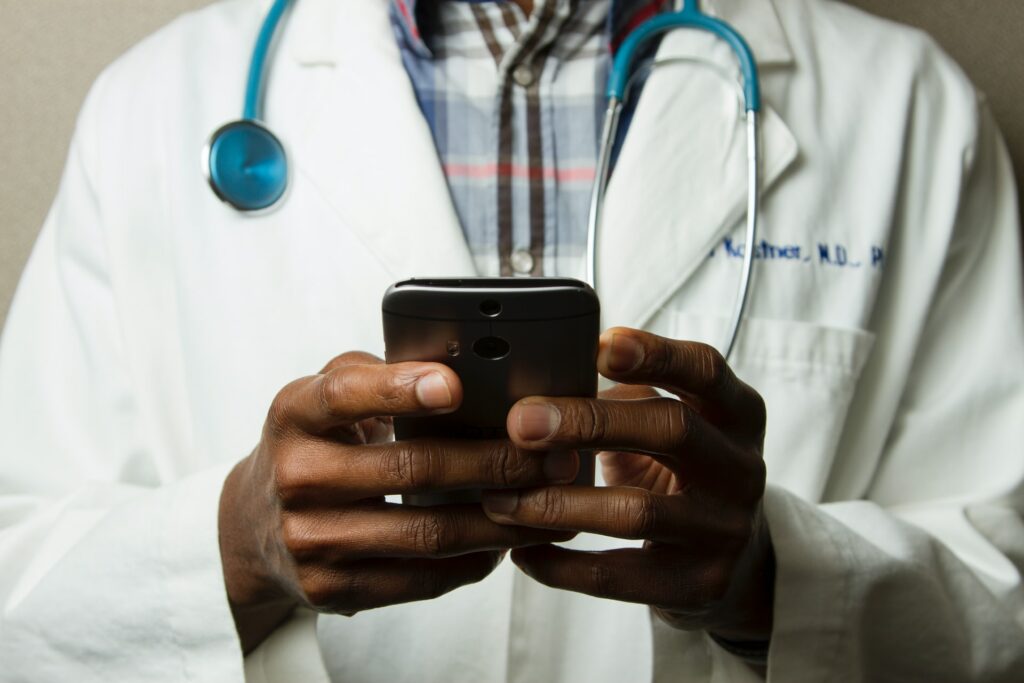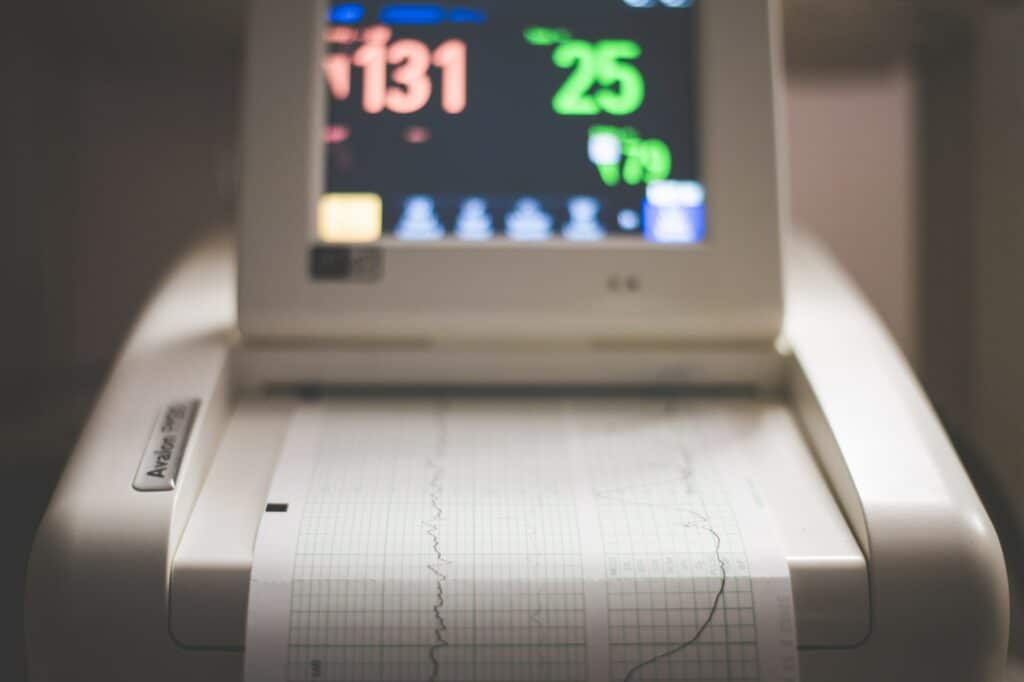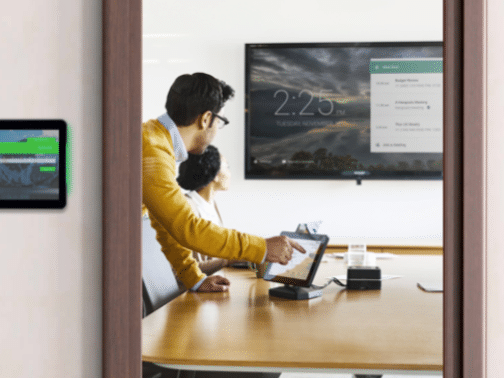Technologies to Watch in Healthcare in 2022

By Kewal Gupta
7th December 2021
We evaluate three cutting edge technologies that help healthcare organisations remain agile and safe.
In the wake of the pandemic, almost every organisation has had to accommodate operational adjustments. This is particularly evident in the health sector where medical practitioners and technology solutions have become even more key to ensuring patient safety whilst maintaining ongoing care services.
By aggregating data, providers can identify trends, enabling them to better predict patient behaviours and organisational needs.
In intensive care situations, systems can combine data across multiple devices that aren’t connected, creating an impressively complete picture of that patient for their clinician. And all that data collected? It can be captured, stored, and analysed to drive better predictions in the future.

Telehealth – the digital communication solution for healthcare
One obvious solution that has revolutionised the delivery of health services in the last two years is Telehealth. These systems are delivering medical care, provider and patient education, health information services, and self-care solutions via a huge range of digital communication technologies.
Telehealth and Telemedicine
The terms telehealth and telemedicine are often used in the same context. Telehealth includes a wide range of technology-driven healthcare activities and services, while telemedicine is essentially the remote diagnosis and treatment of patients via technology.
An example of telemedicine might include a diagnostic service located in another country or time zone to maintain 24-hour radiology capabilities.
Telehealth on the other hand includes every part of the healthcare system that can be conducted through digital communications technology, including:
- Scheduling and delivering remote GP appointments
- Triaging patients remotely before they enter a care facility
- Remotely monitoring patient vital signs, so the patient can remain at home
- Analysing and acting on real-time patient data from a remote location
- Providing advanced medical support to teams in remote locations.
Real-time patient data, available anywhere
Telehealth solutions have quickly expanded beyond phone calls, and video consultations. Provider solutions now include portals and remote monitoring systems to deliver more complex guided workflows for both patients and clinicians.
One such provider is WiCis Health, a platform that uses cloud-based workflows, video-conferencing, and live vital signs to deliver real-time patient care.
WiCis Health is a mobile-first HIPAA compliant Telehealth and Telemedicine system that delivers advanced medical care remotely and to the point of need.
The solution allows doctors to see patients and monitor their vital signs remotely – whether they are in the same building or a completely different country. Customisable data analytics dashboards allow clinical care staff to follow guided workflows and monitor the progress of patients. Essential data can be gathered via wearable technologies that stream real-time information to and from the platform.
Deployable within 48 hours, the WiCis Health platform can scale to support thousands of patients.
Increasing use of Telehealth technologies
Telehealth technologies such as the WiCis Health platform are being deployed via mobile health apps (mHealth), video and audio technologies, digital imaging, remote patient monitoring (RPM), and store and forward technologies.
The rapid adoption of telehealth has greatly helped to expand access to healthcare at a time when traditional in-person visits have had to be avoided due to the significantly increased risk to patients, healthcare providers and communities. According to a May 2020 McKinsey report, at least 20% of all health spending could easily become virtual via Telehealth solutions in the near future.
See the WiCis Health Telehealth Platform in action
To learn more about WiCis Health, contact the team at Channel Partnerships to discuss your needs. We will help to set up a meaningful demonstration of the solution and a follow up with an experienced telehealth solutions expert.

IoT and IoMT Asset Security Solutions for Healthcare
According to a recent study, ransomware attacks on healthcare organisations are having life-and-death consequences. Until now, ransomware has typically been discussed in terms of lost revenue or operational impacts – but for the first-time mortality as a direct result of cyber threats is taking centre stage.
Currently, healthcare providers around the world are under siege from ransomware attacks. To date, 67% of healthcare providers surveyed said that they had been victims of ransomware attacks, while 33% have been hit twice or more.
What’s more, the root cause of the related data breaches was equally liable to be due to an insecure medical system or IoT device.
While medical facilities and hospitals are likely to have active firewalls and anti-phishing solutions in place, IoT protection often fails to gain the attention of over-worked IT staff and security managers.
Most IoT and IoMT (Internet of Medical Things) devices cannot be updated or patched in the same way that a computer can. Many devices run the operating systems and firmware that they originally shipped with. As these devices inevitably increase the attack surface, cybercriminals will take advantage by directly targeting these unguarded entry points.
How hospitals can extend threat detection and responses to connected medical devices
Now for the first time, there are solutions, in the form of a new breed of IoT Attack Detection and Response systems created solely for connected healthcare devices. These solutions give hospitals the power to identify, contain and mitigate threats on IoT and IoMT devices – directly protecting the health, safety, and lives of connected patients.
Hospitals now have the immediate ability to identify and quarantine any device demonstrating malicious or suspicious behaviour. Once the device has been identified and isolated it can be given full remediation and recovery solutions.
One such solution is the Healthcare Attack Detection and Response solution from Cynerio.
Key features of Cynerio’s IoT Attack Detection and Response for Healthcare include:
IoT Attack Alerts
The system alerts hospital IT managers to device behavioural anomalies, complemented by attack detection data from other implementations, machine learning and dozens of vulnerabilities and threat intelligence feeds collected from global sources.
IoT Attack Containment
Any attack observed on a device can be immediately quarantined to give IT Managers a secure way to further remediate the incident without impacting service availability or patient care.
IoT Attack Investigation
Collect detailed forensics on all IoT devices along with the connections between them – and investigate device metadata using deep packet inspections. This forensic data can then be ingested by your Security Incident and Event Management (SIEM) platform to enrich any attack investigation you are carrying out across your IT infrastructure.
IoT Attack Response
The system shares its intelligence on any threats with other IT security solutions that hospitals are using – such as threat detection and isolation tools. IT Managers can actively prevent device exploitation with micro-segmentation that safely limits device communication to the bare minimum so that attacker reconnaissance, lateral movement and ransomware shutdown of devices is blocked.
The Cynerio system also provides real-time help from support agents alongside reporting on PHI exfiltration, risk exposure over time, and step-by-step instructions broken down by device and attack.
See the IoT Attack Detection and Response for Healthcare system from Cynerio in action
To learn more about Cynerio, contact the team at Channel Partnerships to discuss your needs in the first instance. We can help you identify the solution capabilities that are most relevant to your needs and arrange a tailored demonstration. We can then provide a full proposal that is customised for your healthcare environment.

Managing unstructured data explosion in healthcare
Medical images and data files contain untold value for healthcare organisations, yet they are rapidly exceeding the limits of their own data centres.
Hospitals have shifted to digital media for medical imaging. Digital PACS, digital pathology and other systems are all generating and storing petabytes of medical imaging data. This ever-expanding data is pushing the limits of on-premises and cloud storage costs. It is also challenging the ability to manage the availability of clinical data to medical staff.
To make matters worse, healthcare providers typically must retain medical imaging files for several years; they may even have an enterprise-wide policy of retaining medical data forever, because clinical researchers may need access to the data indefinitely.
The cost of managing all this data is growing exponentially.
Keeping data is expensive for hospitals because they must pay not only for the primary storage but also for backups and replication of the images for DR.
IT managers and storage teams are attempting to use cold data tiering to the cloud. However, tiering options from storage vendors are often not viable because of costs, limitations on how much data can be tiered, and egress costs on data access.
Additionally, cloud gateway solutions can create a new data silo – and as such any archived files might not be accessible to clinicians from their original locations.
Intelligent data management for healthcare
New data management solutions for healthcare providers can now deliver tiered data storage with immediate access capabilities for medical images not used for 90 days or more. Unused data can now be transparently tiered to cloud-based object storage.
Moving to durable object storage eliminates the requirement for backups since the service automatically stores two or more copies of the data. Researchers, pathologists, and technicians can now continue accessing the tiered images exactly as before.
With intelligent data management solutions, Digital Pathology, PACS, VNA and other applications can continue to work as before without requiring any special integrations or changes to their workflows. Data is moved transparently and in real-time behind the scenes – making sure that any data is delivered seamlessly from cold storage.
Data management cuts cost significantly by transparently tiering from network-attached storage to cloud
There are many choices today for data management solutions, but healthcare providers need solutions that work seamlessly with their existing storage systems and imaging applications. They also need solutions that eliminate vendor lock-in so they can access data and move it to different vendor platforms without causing higher costs or onerous processes.
In the case of healthcare, data management solutions must integrate effortlessly with digital imaging application workflows to automatically move older images from NAS to resilient object storage in the cloud-based on policies.
The leading solution is the Unstructured Medical Data Management system from Komprise.
With the Komprise solution, user experience and workflows remain unchanged. Clinicians, technicians, and other healthcare staff don’t have to change how they search and access files. There is no re-training required and there is zero disruption to their existing workflows. Data is automatically tiered to more affordable cloud storage transparently, without changing where or how clinical staff access that data.
Komprise also ensures continued interoperability with any medical imaging application without any proprietary interfaces or changes. This frees IT managers to add data management to their existing infrastructure without disruption.
The Komprise solution eliminates cold data – such as unused images – not just from local storage but also from backups and DR. The smart solution offloads the entire image file from local storage to durable tiered cloud storage – proportionately shrinking the backup and DR footprint.
The Komprise solution also enables cloud-native access and global search solutions, providing the ability to create a virtual data lake. The long-term benefits of this approach include research, analysis, and compliance.
Take a tour of the Komprise data management solution.
To learn more about Komprise and their unique data management solution for healthcare, contact the team at Channel Partnerships in the first instance. Our consultants can help you assess the solution for your environment and will ensure that you see a relevant and accurate demonstration, followed by a proposal that fits with your use case.
In conclusion
In the years since COVID-19’s emergence, health systems have introduced machine learning tools that can quickly scan CT and X-ray models for the presence of COVID-19 in lungs and created virtual intensive care settings to monitor and manage patients.
From convenient consultations at home to dynamic monitoring and management of real-time patient information, the healthcare sector is being boosted by analytics and the full spectrum of digital technology.
The push for rapid innovation amid COVID-19 has resulted in new solutions that provide patients with faster, more accurate and complete care.
Remote care, sophisticated data management and security are becoming the standard for healthcare IT Managers. These benefits are helping us reimagine what healthcare will look like tomorrow.
With these advances, it’s not hard to imagine a future where remote management of chronic conditions is routine, where patients are protected from cyber threats, and where patient data is immediately accessible to those that need it most.
For more information and insights into additional healthcare technologies please contact the team at Channel Partnerships. We can help you evaluate healthcare technologies from leading and emerging and specialist vendors.
Latest articles
February 26, 2025
Channel Tools partners with Zerotier to provide enterprises with Secure, Scalable Connectivity Solutions
Channel Tools partners with Zerotier to provide enterprises with secure, scalable connectivity…
February 23, 2025
Channel Tools Partners with Mimo to expand into Innovative Display and Tablet Solutions Market
Channel Tools Partners with Mimo to expand into Innovative Display and Tablet Solutions Market
December 18, 2024
Channel Tools Partners with Sclera to deliver Advanced AI-driven Asset Management
Aicuda World isn’t just a participant in the field of AI and security, it’s a thought leader,…
Join our Partnership Program
There are many benefits partnering with us. Simply complete the form at the bottom of this page to discuss how the program can sky-rocket your visibility in any technology market place. We have huge experience in the creation of new channels – and we can create introductions, leads and business opportunities for your sales teams.
Want to know how a Channel Partnership could benefit your business?
Complete the form below and one of our team will call you back:


